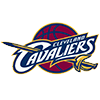As a slight modification to the way we defined a timeshare last season, let's say that any team employing a backfield where no running back is given two-thirds (67 percent) or more of the touches is a timeshare. You may recall that last season's line was drawn at 65 percent, but the only outlier under the new definition is Buffalo's Fred Jackson, and I'll provide more clarity regarding this decision when the timeshare backfields are analyzed next week.
It's interesting to note that the number of 200-point running backs (standard scoring where each yard rushing/receiving is worth one-tenth of a point and touchdowns are worth six) dropped from 12 in 2008 to eight last season. Of those eight, five fell into the pure workhorse category (including four of the top five scores – Chris Johnson, Adrian Peterson, Maurice Jones-Drew and Frank Gore).
Here's a look at 10 teams that used a single-back system last season:
| Player | Age | Att | Yds | YPC | TD | Rec | Yds | YPR | TD | Tchs | Tch% | FP | FP% | FppTch | cCAR |
| Steven Jackson | 27 | 324 | 1416 | 4.4 | 4 | 51 | 322 | 6.3 | 0 | 375 | 89.3% | 197.8 | 88.9% | 0.53 |
As a slight modification to the way we defined a timeshare last season, let's say that any team employing a backfield where no running back is given two-thirds (67 percent) or more of the touches is a timeshare. You may recall that last season's line was drawn at 65 percent, but the only outlier under the new definition is Buffalo's Fred Jackson, and I'll provide more clarity regarding this decision when the timeshare backfields are analyzed next week.
It's interesting to note that the number of 200-point running backs (standard scoring where each yard rushing/receiving is worth one-tenth of a point and touchdowns are worth six) dropped from 12 in 2008 to eight last season. Of those eight, five fell into the pure workhorse category (including four of the top five scores – Chris Johnson, Adrian Peterson, Maurice Jones-Drew and Frank Gore).
Here's a look at 10 teams that used a single-back system last season:
| Player | Age | Att | Yds | YPC | TD | Rec | Yds | YPR | TD | Tchs | Tch% | FP | FP% | FppTch | cCAR |
| Steven Jackson | 27 | 324 | 1416 | 4.4 | 4 | 51 | 322 | 6.3 | 0 | 375 | 89.3% | 197.8 | 88.9% | 0.53 | 1,548 |
| Matt Forte | 24.5 | 258 | 929 | 3.6 | 4 | 57 | 471 | 8.3 | 0 | 315 | 88.5% | 164.0 | 88.0% | 0.52 | 574 |
| Maurice Jones-Drew | 25 | 312 | 1391 | 4.5 | 15 | 53 | 374 | 7.1 | 1 | 365 | 86.9% | 272.5 | 88.2% | 0.75 | 842 |
| Chris Johnson | 25 | 358 | 2006 | 5.6 | 14 | 50 | 503 | 10.1 | 2 | 408 | 85.9% | 346.9 | 90.7% | 0.85 | 609 |
| Ryan Grant | 26.5 | 282 | 1253 | 4.4 | 11 | 25 | 197 | 7.9 | 0 | 307 | 84.1% | 211.0 | 81.5% | 0.69 | 782 |
| Joseph Addai | 27 | 219 | 828 | 3.8 | 10 | 51 | 336 | 6.6 | 3 | 270 | 75.2% | 194.4 | 75.5% | 0.72 | 861 |
| Frank Gore | 27 | 229 | 1120 | 4.9 | 10 | 52 | 406 | 7.8 | 3 | 281 | 74.9% | 230.6 | 86.4% | 0.82 | 1,168 |
| Adrian Peterson | 25 | 314 | 1383 | 4.4 | 18 | 43 | 436 | 10.1 | 0 | 357 | 72.1% | 289.9 | 77.4% | 0.81 | 915 |
| Rashard Mendenhall | 23 | 242 | 1108 | 4.6 | 7 | 25 | 261 | 10.4 | 1 | 267 | 72.0% | 184.9 | 78.3% | 0.69 | 261 |
| Cedric Benson | 27.5 | 301 | 1251 | 4.2 | 6 | 17 | 111 | 6.5 | 0 | 318 | 71.3% | 172.2 | 74.3% | 0.54 | 935 |
Age is as of Week 1 of the 2010 NFL season. Players listed with a ".5" will have a birthday during the season.
Tch% = The percentage of touches received on a given team. **Only includes team's top 2-3 running backs.
FP = fantasy points, where 10 yards (rushing or receiving) = 1 point, TD = 6 points.
FP% = The percentage of fantasy points scored compared to other backs on the same team. **Only includes team's top 2-3 rushers.
Atlanta
Michael Turner tried to return from a high-ankle sprain in Week 12 and Week 14, but he was ineffective and ultimately left the workload to Jason Snelling over the team's final seven games. At first glance, it might appear as though the Falcons were operating with a timeshare last season, but that simply wasn't the case. Snelling did not have double-digit carries in a game until Week 10, the game that Turner actually suffered his injury. Further, only 19 of his 142 carries last season came before Turner's injury. The Falcons clearly prefer at a single-back system, making Turner an early first-round selection because of the heavy workload he'll be given. Even with minimal contributions as a pass catcher out of the backfield, Turner had an elite 0.82 fantasy points per touch last season, thanks to a hefty 4.9 YPC average and double-digit touchdowns.
Chicago
Matt Forte was projected as a top-three running back entering 2009, thanks in large part to his clear path to 300 touches and the lack of a proven healthy backup (Kevin Jones). Outside of PPR leagues, Forte was a colossal bust for a player who managed to play in all 16 games and eclipse the 250-carry mark. The Bears signed Chester Taylor to bolster their backfield, who should significantly eat into Forte's workload in 2010. Bears offensive coordinator Mike Martz has indicated through the media that the team feels they have two starting running backs in tow. Health permitting, this situation has timeshare written all over it, as the 31-year-old Taylor will make $7 million in the first year of a four-year pact with Chicago. The Bears' receiving corps has plenty of question marks entering training camp, so perhaps the scheming Martz will find a way to deploy both of his backs as frequent pass-catchers in his offensive system. Given their ages and career workloads, you have to like Forte as the upside play here, but his 3.8 YPC career average leaves a lot to be desired. The reality is that both backs are very similar in their respective abilities, so the Bears may simply roll with the hot hand and employ something along the lines of a 60-40 or 70-30 division of the workload.
Cincinnati
The Bengals made a workhorse out of Cedric Benson last season, and plenty of fantasy owners reaped the benefits given the relatively low cost of drafting a back who went on to rush for 1,251 yards and six scores. Other than using Brian Leonard as a third-down back and receiver out of the backfield, the Bengals maintained their single-back tendencies last season, which has vaulted Benson up most draft boards this summer. He doesn't catch passes (17 receptions in 2009), but his 4.2 YPC was a career-high and the odometer reading is favorable even after a 370-carry pace over 13 games last season. Bernard Scott was used sparingly out of the backfield last season, but he's the favorite to handle the starting job if Benson breaks down again. That outcome would almost certainly lead to an expanded role for Leonard as well.
Green Bay
If playing in one of the league's most productive offenses and going over the 1,200-yard and 10-TD mark isn't enough to make a player a first-round fantasy pick, Ryan Grant simply can't become one. Sure, he doesn't catch many passes (25), but gobbling up yards at a 4.4 YPC clip is nothing to sneeze at. The biggest criticism here has to be the lack of big games. Grant went over the 100-yard mark three times in 16 starts last season, breaking off eight runs of 20-plus yards and two of 40-plus. Outside of the possibility of getting a few more carries in close where quarterback Aaron Rodgers has become a threat to vulture rushing scores, Grant's 2009 is his peak. Fortunately, little has changed in the Packers' offense since last season and he doesn't face much of a threat for playing time from Brandon Jackson or rookie James Starks. In standard non-PPR leagues, Grant was one of just eight running backs to score 200 or more fantasy points last season. As a mid second-round pick (and even later in some drafts), he's looking like a good value again on draft day.
Indianapolis
The Colts didn't have a single-back system in 2008, but that was more a result of Joseph Addai's injury woes than a philosophical decision. Even after the decision to select Donald Brown in the first round of the 2009 draft, it was Addai who collected 75.2% of the touches in the Colts' backfield last season. Having 51 receptions and 10 rushing scores made Addai an undervalued gem in PPR formats last season, and the Colts' trust in him as their primary ball-carrier in the red zone is going to make it difficult for Brown to wrestle away more than 40-50 percent of the workload in his second season. In the event of an Addai injury, Brown would have immediate top-10 potential. Until that opportunity arises, Brown will continue to learn the team's protection schemes and try to prove he's ready to handle the pass-blocking duties required to share a backfield with franchise quarterback Peyton Manning.
Jacksonville
Quick – name the No. 2 running back on the Jags' depth chart. Maurice Jones-Drew proved more than capable of handling the feature role last season by rushing for nearly 1,400 yards and catching 53 passes. As far as monopolizing snaps goes, MJD is going to be near the top of the list for at least the next season or two, as head coach Jack Del Rio appears to be more than comfortable with his 5-foot-7 workhorse rolling up the odometer. Jones-Drew's 86.9% of the touches ranked third in the league last season (Steven Jackson & Matt Forte). If you're looking to insure your investment in Jones-Drew, Rashad Jennings is expected to back him up again this season after averaging 5.2 YPC in very limited duty (39 carries) last season.
Minnesota
Even with Chester Taylor around as his backfield running mate, Adrian Peterson eclipsed 300 carries and racked up 18 rushing scores last season. Further, he caught a career-high 43 passes, leading to 1,819 yards from scrimmage. With double-digit touchdowns in each of his three NFL seasons and a career 4.9 YPC mark, it's hard to believe that there are whispers about him being undeserving as the first or second-overall pick on draft day. The Brad Childress-Brett Favre waltz is already in full swing, so another year with No. 4 under center should bring continuity to the Vikings' 8th-ranked offense. Concerns here are with his issues hanging onto the ball (he's had them throughout his three seasons) and the possibility of rookie Toby Gerhart replacing him in short-yardage and goal-line situations. Unless you hear it from the mustachioed head coach, don't bank on that happening without an opportunity for Peterson to keep those valuable carries.
Pittsburgh
Once Rashard Mendenhall took hold of the starting job in Week 4, he was one of the most productive runners in the league (86.2 YPG) from that point forward. As a receiver, he only caught 27 passes last season, but a jump into the 40-plus range seems reasonable when you consider a six-catch game against the Packers in Week 14. Mewelde Moore will remain in the fold as the backup, but the job is entirely Mendenhall's and we'd hardly be surprised by a 1,300-plus yard effort along with double-digit touchdowns. The only question here is whether the Steelers' offense will be able to pass well enough with Byron Leftwich at the helm to keep opposing defenses honest against the run during Ben Roethlisberger's suspension.
San Francisco
A report during the spring indicated that the Niners' front office was toying with the idea of switching to more of a timeshare in the backfield this season, but there are a lot of question marks behind starter Frank Gore entering 2010. Gore's carries dipped for the third straight season, but he averaged 4.9 yards per carry behind an improving offensive line and posted double-digit touchdowns for the first time in five NFL seasons. The reality is, Gore was productive with 229 carries last season and limiting him to that range again with a similar workload is probably the best way to try and keep him healthy. Even with a relatively low odometer reading (1,168), it's easy to forget that Gore's body has taken a pounding dating back to his time at the University of Miami. Whether it's Anthony Dixon or Glen Coffee picking up the carries as his backup, Gore should be the primary option at the goal line this season. Just beware of the potential for a quick dropoff in production here as his body will eventually betray him, especially if he's overused. The lack of a clear-cut replacement certainly hedges a great deal of the injury risk, but tread very carefully here as the draft-day price has been an early first-round selection (fifth or sixth in many leagues) this summer.
St. Louis
No running back took a larger share of his team's workload last season than Steven Jackson did for the Rams (89.3%). Behind a rebuilding line and in an otherwise terrible offense decimated by a slew of injuries, Jackson still managed to roll up 1,416 rushing yards thanks to an impressive 4.4 YPC. As the rebuilding efforts continue, the Rams don't have much for alternatives in their backfield, so unless they decide to bring in another veteran (Brian Westbrook?) to share some of the workload, it appears as though Jackson will be out there as an every down back again this season. Health will definitely be a concern, however, as Jackson had surgery in April to repair a herniated disc that he suffered in November. The Rams are insisting it's not a big deal, but keep a very close eye on him throughout training camp in case he experiences a setback.
Tennessee
Chris Johnson made LenDale White obsolete last season in Tennessee, taking 85.9% of the touches and cranking out 90.7% of the Titans' backfield fantasy points. Now that his contract situation has been resolved for 2010, Johnson will be in camp on time and is generally heralded as the top overall selection on most draft boards. In addition to a gaudy 5.6 YPC last season, Johnson caught 50 passes for another 503 yards and now holds the league record for yards from scrimmage in a season with 2,509. Only 11 backs have ever gone over 2,250 yards, and of that group, only LaDainian Tomlinson has done it twice. It's interesting to note, however, that Tomlinson did not accomplish that feat in consecutive seasons (2003 and 2006). The bottom line here is that Johnson won't yield more than a half-dozen touches per game to Javon Ringer, but if you believe in history the outlook isn't entirely promising. Of the six 2,000-yard rushing seasons in NFL history, no player rushed for more than Barry Sanders' 1,491 yards the following year. Fortunately, the question here isn't whether Johnson will get 350-plus touches out of the backfield again, but instead it's a matter of figuring out if he can stay well above the 5.0 YPC mark.




































